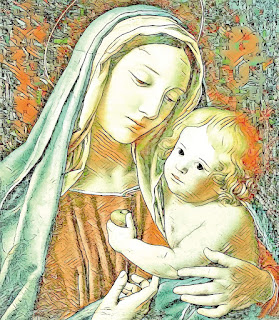History Of Marian Devotion
Marian devotions are a form of religious devotion that focuses on the Virgin Mary, the mother of Jesus. The history of Marian devotions can be traced back to the early days of Christianity, but they have evolved over time to take many different forms in different cultures and traditions.
One of the earliest forms of Marian devotion was the veneration of Mary as the Theotokos, or "God-bearer." This title was given to Mary in the early days of Christianity, and it reflected the belief that she was the mother of Jesus, who was believed to be the Son of God. This belief was important in early Christianity, as it helped to establish the divinity of Jesus and to affirm the role of Mary as a central figure in the Christian faith.
As Christianity spread throughout the Roman Empire, the veneration of Mary began to take on new forms. In the Eastern Orthodox Church, for example, the Theotokos was often depicted in icons and other forms of art, and her image was used as a focus for devotion and prayer. In the Western Church, meanwhile, devotion to Mary began to take on more of a personal and emotional character. This was reflected in the rise of the rosary, a devotional practice that involved praying a series of prayers while meditating on the mysteries of the life of Jesus and Mary.
During the Middle Ages, Marian devotion continued to evolve and take on new forms. One of the most important developments of this period was the rise of the cult of the Virgin Mary, which involved the worship of Mary as a powerful intercessor who could intercede with God on behalf of believers. This cult was particularly popular in the Catholic Church, and it was reflected in the development of new forms of devotion such as the Hail Mary and the Rosary.
The medieval period also saw the rise of the cult of the Black Madonna, which involved the worship of Mary as a dark-skinned or black woman. This cult was particularly popular in Europe, and it was reflected in the development of many different Black Madonna shrines and statues. The cult of the Black Madonna was also associated with the belief that Mary had special powers to protect and heal people, and it was reflected in the many miracles and healings that were attributed to her.
The Renaissance period was also a time of great creativity in the field of Marian devotion. During this period, many new forms of art and literature were created that celebrated the life and role of Mary. This was reflected in the many beautiful paintings, sculptures, and other works of art that were created during this period, which depicted Mary in a variety of different roles and contexts.
During the modern era, Marian devotion has continued to evolve and take on new forms. Today, there are many different forms of Marian devotion, including the Rosary, the Hail Mary, and the Divine Mercy Chaplet. Additionally, many different Marian shrines and pilgrimage sites have been established around the world, including Lourdes, Fatima, and Guadalupe, which attract millions of visitors every year.
In recent years, there has also been a renewed interest in the Black Madonna, which has been reflected in the many new scholarly studies and publications that have been produced on this topic. Additionally, many new forms of Marian devotion have been developed, such as the Living Rosary, which is a form of devotion that involves the participation of many people in praying the Rosary together.
In conclusion, Marian devotion has a long and rich history that spans many centuries and different cultures. From the early days of Christianity, through the Middle Ages and the Renaissance, and into the modern era, Marian devotion has continued to evolve and take on new forms.

Comments
Post a Comment